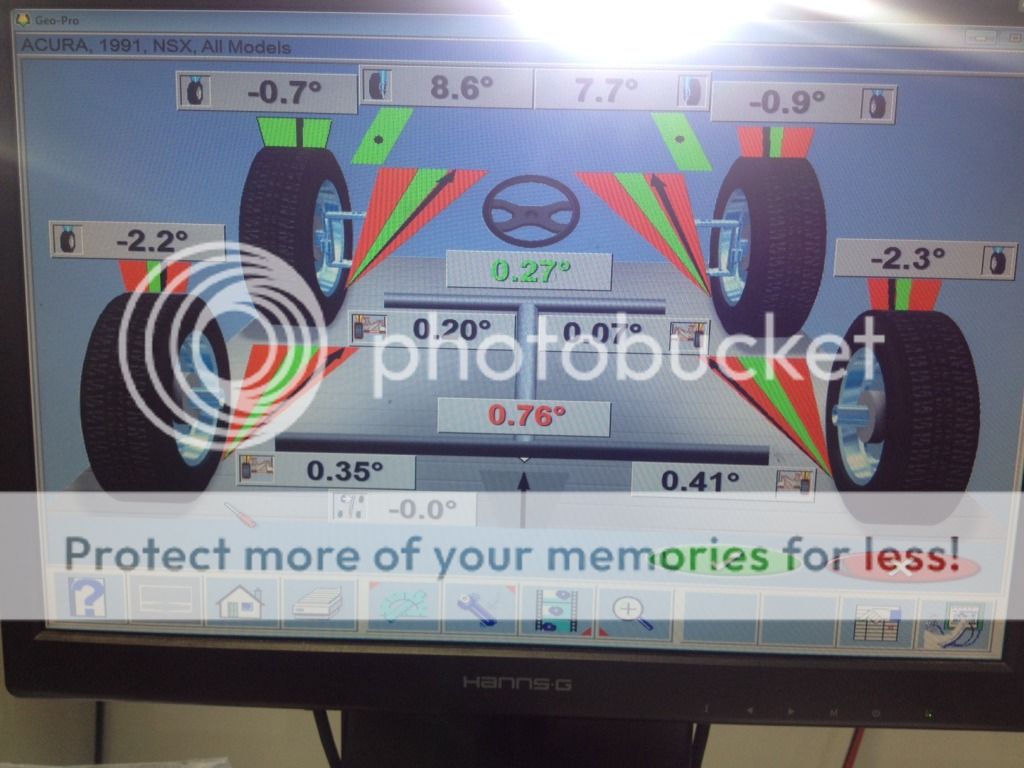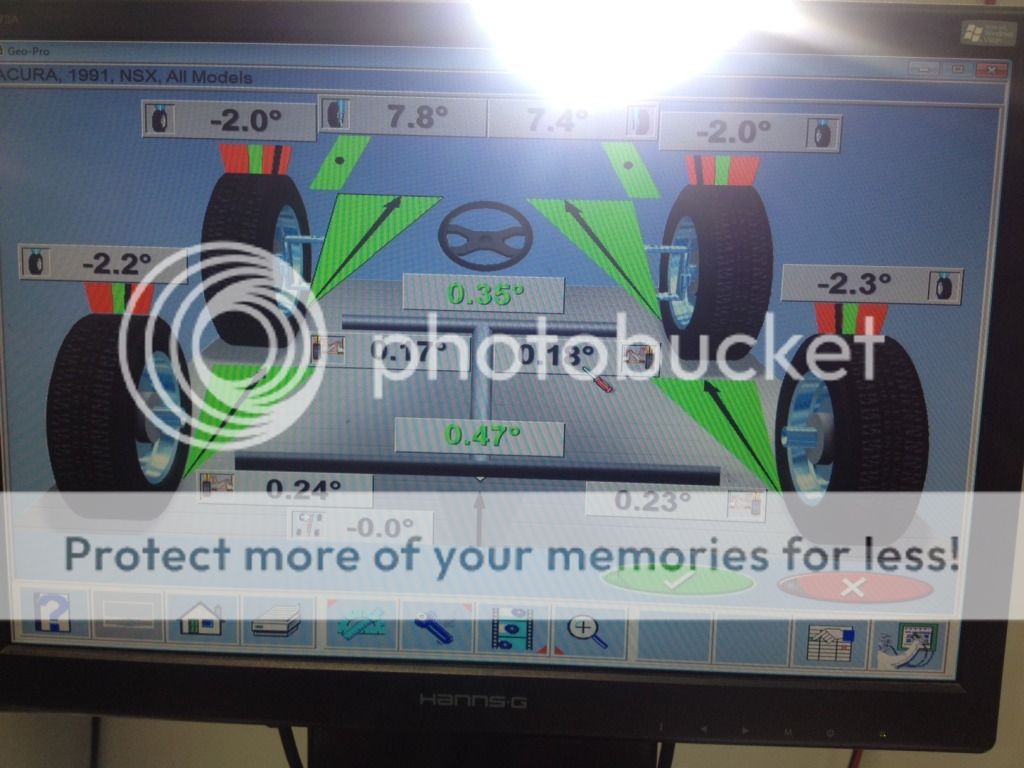Here's some good info I found on Prime.
http://www.nsxprime.com/wiki/Alignment
What Are The Factory Alignment Settings?
Front End
Factory front alignment (ALL years):
Total toe: -3.5mm +/- 1mm
Camber: -20 min +/- 30min (-0.33 deg +/- 0.5 deg)
Caster: 8 deg.
Alternative front alignment with OEM tires (ALL years):
[KJ] The front tires typically wear out on the inside long before the outside is worn. Reducing or even removing the front toe-out and minimizing the camber improves the tire wear, at the cost of some turn-in crispness and, high speed stability. Even with no camber or toe, the front Yokos would wear on the inside due to their internal bias that pre-tensions them for turning. The rears have the opposite bias, so negative camber acts to balance the wear between outside and inside.
Total toe: -2.5mm
Camber: 00.00 degree
Caster: 8deg. Caster does not wear tires.
What the front tires do:
The front tires pull out (RF pulls to the right, LF pulls to the left) slightly to follow the alignment settings. The purpose of this is to remove the compliance or "slop" associated with moving parts, (ball joints, tie rod ends, pivot points, etc.) Each tire slips sideways 1.75mm with each revolution.
The Toe is there to make the car push (understeer) slightly. The camber on the front is to give you a better rubber patch on the ground when turning. The car wants the tire go straight when the alignment setting makes the tire want to turn, thus, (simplified) the car is dragging the inside of the tire more than the outside. and wearing the inside. Hard cornering does not effect wear as much as straight line driving.
What you feel when driving:
With the Yoko-Bridgestone tire and the stock settings, going down the freeway at 70 mph, a slight tug on the steering wheel would put the car in the next lane.
With Goodyear Eagle, Firestone, Comp T/A, Michelin, etc. the car will feel like it has low tire pressure when compared to the OE tires, and a quick lane change will give a *** wind-up/sling-shot ***effect before the car starts to go into the next lane.
Rear End
1991-1992 Factory Rear alignment with OEM tires
The original factory alignment specs for the rear were designed to provide maximum performance at the expensive of shorter tire life.
Total toe: 6mm +/- 1mm
Camber: -1 deg 30 min +/- 30min (-1.5 deg +/- 0.5 deg)
1993+ Factory Rear alignment with OEM tires
After a class action lawsuit about what they considered to be premature tire wear, the rear alignment settings were changed. With less rear toe, the rear tires last longer. There is no reason you can't run the original '91-'92 settings if ultimate performance is the goal and tire life is not a primary concern.
Total toe: 4mm +/- 1mm*
Camber: -1 deg 30 min +/- 30min (-1.5 deg +/- 0.5 deg)
*The only change to any of the settings was for the rear toe in 1993.
Alternative rear alignment with OEM tires
Running 1.5mm toe-in per side seems to provide even tire wear on the rear tires and makes them last even longer. Again, but further reducing rear toe there is some performance tradeoff.
Total toe: 3mm
Camber: -1 degree
What the rear tires are doing:
The rear tires pull in (RR pulls to the left, LR pulls to the right) slightly to follow the alignment settings. The purpose of this is to remove the compliance or "slop" associated with moving parts, (ball joints, tie rod ends, pivot points, etc.) AND to help keep the rear of the car tucked IN when in turns.









